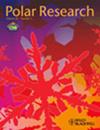Alfred Eaton: a Victorian naturalist at the ends of the world
IF 1.3
4区 地球科学
Q3 ECOLOGY
引用次数: 0
Abstract
Alfred Edwin Eaton (1844–1929) was amongst numerous Victorian naturalists whose exotic collections disseminated to the natural history museums of Britain laid the groundwork for our understanding of biodiversity. What sets him apart from his contemporaries was his first-hand knowledge of organisms at the polar extremes. This paper describes Eaton’s contributions to polar biology, especially in the field of entomology, from two high-latitude expeditions: the 1873 Benjamin Leigh Smith Expedition to Svalbard in the European Arctic and the 1874 British Transit of Venus Expedition to Kerguelen Island in the southern Indian Ocean. His observations of flightless polar and subpolar insects, in particular, lent support to the work of Challenger naturalist Henry Moseley and botanist Joseph Hooker on species dispersal in the Southern Ocean and on adaptations that arise in response to the unique selection pressures in harsh, isolated conditions.阿尔弗雷德·伊顿:世界尽头的维多利亚博物学家
阿尔弗雷德·埃德温·伊顿(Alfred Edwin Eaton, 1844-1929)是维多利亚时代众多博物学家中的一员,他的珍奇藏品遍布英国的自然历史博物馆,为我们对生物多样性的理解奠定了基础。他与同时代人的不同之处在于他对两极生物的第一手知识。本文描述了伊顿对极地生物学的贡献,特别是在昆虫学领域,从两次高纬度探险:1873年本杰明·利·史密斯远征到欧洲北极的斯瓦尔巴群岛和1874年英国金星过境远征到南印度洋的克尔盖伦岛。他对不会飞行的极地和亚极地昆虫的观察,特别是,为挑战者号博物学家亨利·莫斯利和植物学家约瑟夫·胡克的研究提供了支持,他们研究了物种在南大洋的扩散,以及在严酷、孤立的条件下,由于独特的选择压力而产生的适应性。
本文章由计算机程序翻译,如有差异,请以英文原文为准。
求助全文
约1分钟内获得全文
求助全文
来源期刊

Polar Research
地学-地球科学综合
CiteScore
3.20
自引率
5.30%
发文量
22
审稿时长
>12 weeks
期刊介绍:
Since 1982, Polar Research has been the international, peer-reviewed journal of the Norwegian Polar Institute, Norway''s central institution for research, environmental monitoring and mapping of the polar regions. Aiming to promote the exchange of scientific knowledge about the Arctic and Antarctic across disciplinary boundaries, Polar Research serves an international community of researchers and managers. As an open-access journal, Polar Research makes its contents freely available to the general public.
Original primary research papers comprise the mainstay of Polar Research. Review articles, brief research notes, letters to the editor and book reviews are also included. Special issues are published from time to time.
The scope of Polar Research encompasses research in all scientific disciplines relevant to the polar regions. These include, but are not limited to, the subfields of biology, ecology, geology, oceanography, glaciology and atmospheric science. Submissions from the social sciences and those focusing on polar management and policy issues are welcome. Contributions about Antarctica are particularly encouraged.
 求助内容:
求助内容: 应助结果提醒方式:
应助结果提醒方式:


